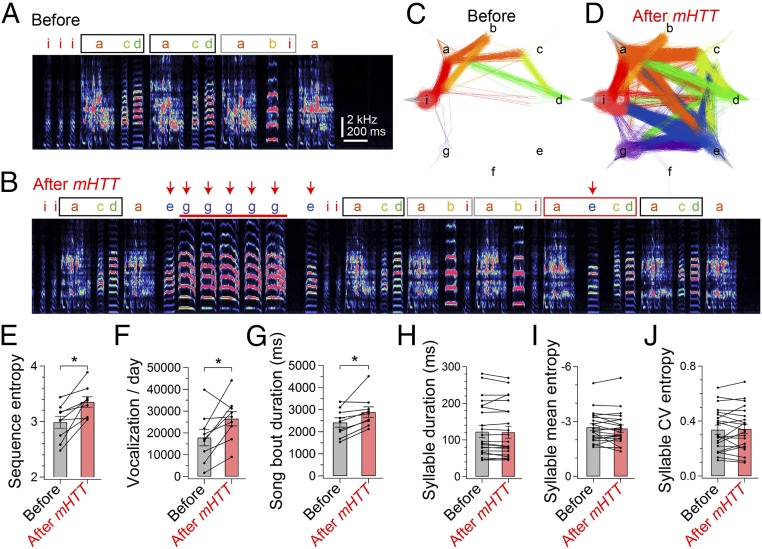Fig. 2.
Selective disruption of syllable sequences in mHTT-Q94 birds. Spectrogram of a representative song bout from a male adult zebra finch at 8 d before (A) and 47 d after (B) bilateral injection of mHTT in area X (see also Fig. S2 A and B). Characters denote different syllables. Stereotyped song motifs are demarcated with black and gray squares. Integration of new vocalizations (red arrows) accompanied a new syllable sequence (red square) and increased occurrence of syllable repetition (red horizontal bar). A syllable transition diagram shows all syllable trajectories on the day in A (C) and B (D). Each song bout starts with a gray inward line, and lines were then drawn between consecutive syllables to show a syllable trajectory of the song bout, which ends with an outward line. Colors denote preceding syllables. Repetitions of syllables are shown as curved lines with brighter colors. After injection of mHTT, sequence entropy (E), total vocalizations on the day (F), and mean song bout duration (G) were increased, indicating disrupted syllable sequencing [sequence entropy: t(8) = 4.059, P = 0.010; vocalization: t(8) = 2.785, P = 0.024; bout duration: t(8) = 3.46, P = 0.011]. *P < 0.050. Spectral features such as duration (H), mean entropy (I), and CV of entropy (J) were not significantly changed by injection of mHTT [duration: t(20) = 0.833, P = 0.415; mean entropy: t(20) = 1.122, P = 0.275; CV entropy: t(20) = 0.418, P = 0.681] (see also Figs. S2 and S3).

